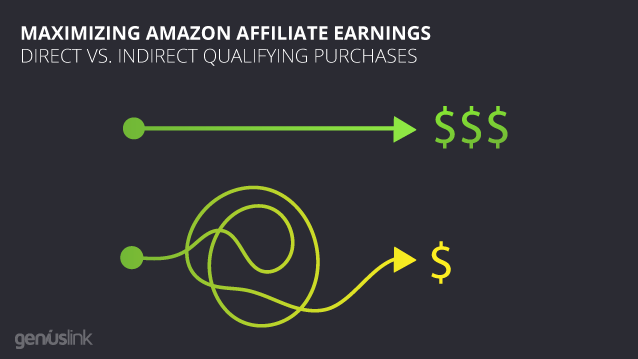Direct Qualifying vs. Indirect Qualifying Purchases
In early February 2021, Amazon drastically expanded the unique method that is used to calculate affiliate commission payouts in five of the 19 Amazon affiliate programs worldwide.
For the five original Associates programs in Europe, the Direct vs. Indirect Qualifying Purchases model is now dominant.
What does this mean for your bottom line and how can you maximize Amazon affiliate earnings? Great questions, let’s dive in!
What are Direct and Indirect Qualifying Purchases?
In short, with the expanded model, Amazon rewards you with a higher commission rate when one of the shoppers you refer buys the product you recommended or a product in the same category. Conversely, Amazon will pay you a significantly lower commission rate if your referred shopper buys something unrelated to what you were promoting.
Further, if you sell a lot of products from a specific category in a given month and cross a threshold in sales, your commission rate may even bump up a percentage or more for that month. A throwback to the Volume-based commission model so many Associates loved.
With that simplified explanation in mind, here is Amazon’s language from their EU Commission Income Statement Appendix, broken into three parts and my (non-legally trained) opinion in deciphering its meaning.
Standard Commission Income may vary depending on whether a Qualifying Purchase occurs from a customer making a Direct Qualifying Purchase or an Indirect Qualifying Purchase and based on the amount of Qualifying Revenues for a Product Category.
“Qualifying Purchases” are the sales your affiliate links made when they are following Amazon’s exact rules around their affiliate program. So this sentence just says the amount you make is going to depend on the sales that classify as a Direct Qualifying Purchase or Indirect Qualifying Purchases. Further, because there is a bump in commission rate for hitting sales thresholds, your commissions will be higher if you hit those thresholds.
No problem right? Let’s get into the exact definitions of those two key terms now.
Direct Qualifying Purchase:
A “Direct Qualifying Purchase” means a Qualifying Purchase of a Product in the same Product Category as the Product detail page linked to from the Special Link that resulted in that Qualifying Purchase.
Okay, so a “Direct Qualifying Purchase” just means that a person bought the specific product you recommended or a product that is in the exact same category.
It’s also important to note that a Direct Qualified Purchase can only come from using an affiliate link that lands on a specific product’s “detail page.” Details pages often have “/dp/” in the URL, typically right before the ASIN.
This is a “detail page”:
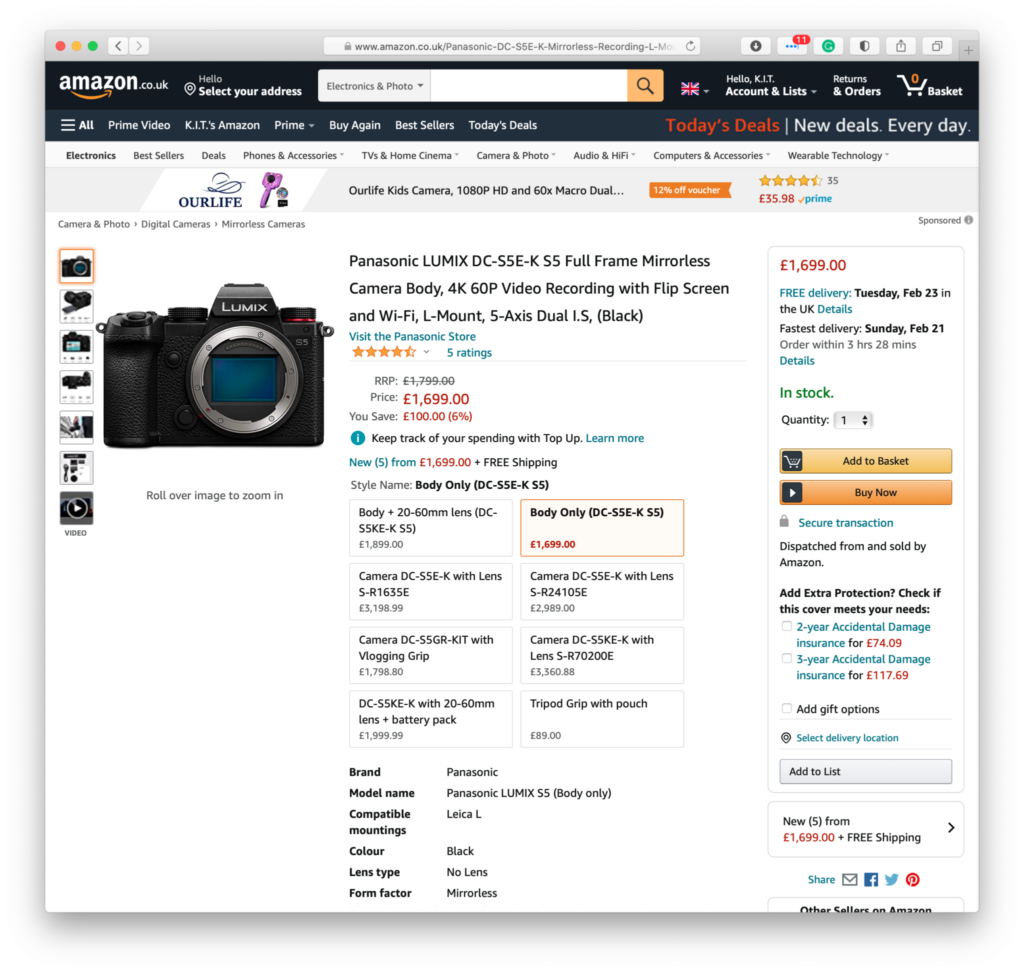
These are NOT product details pages, thus a link landing on one of these pages is automatically NOT a Direct Qualifying Purchase:
This is a “search results” page:
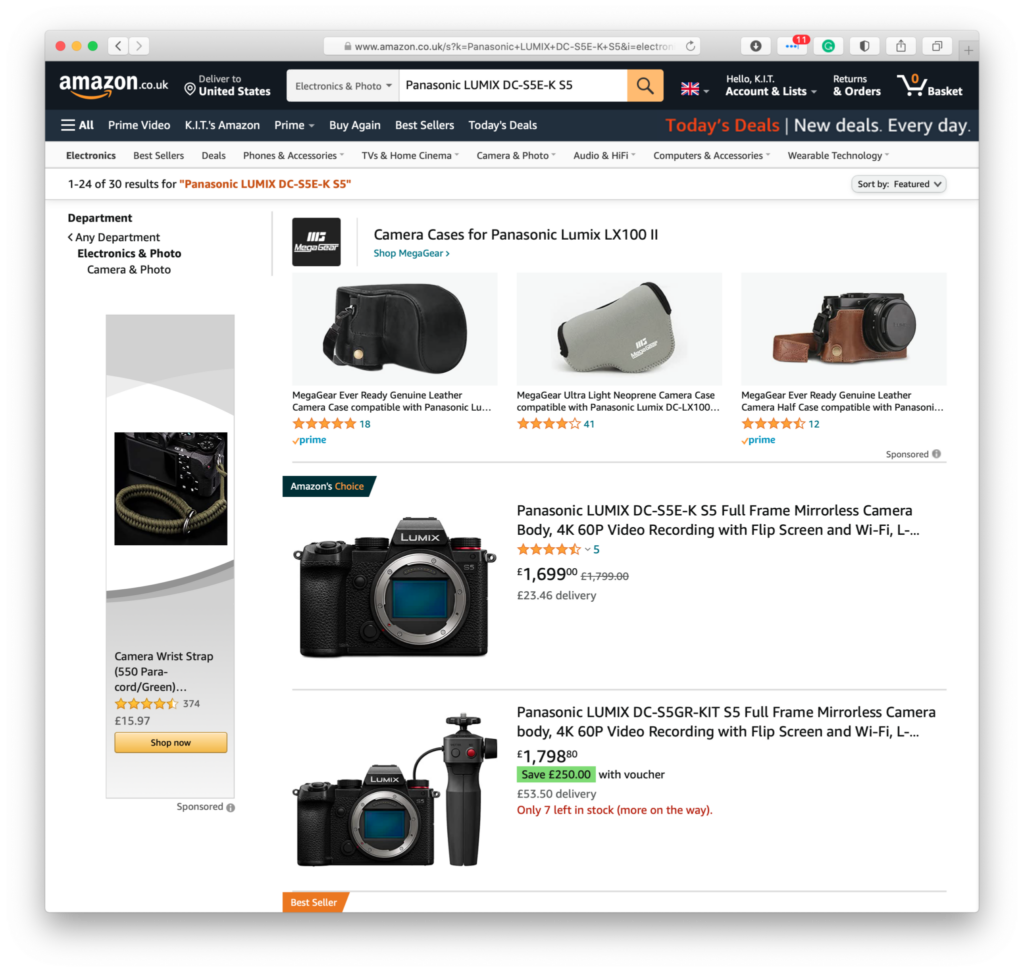
This is a “Store” page:
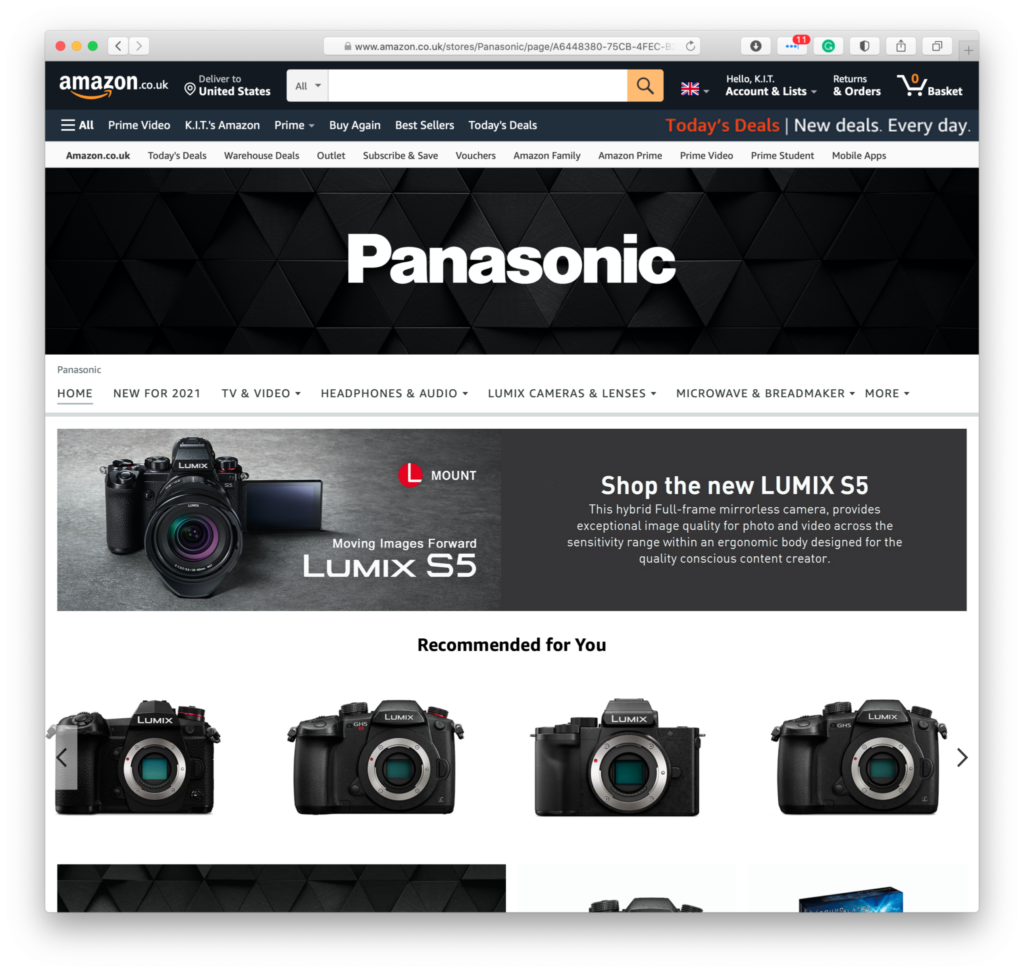
This is a Category page:
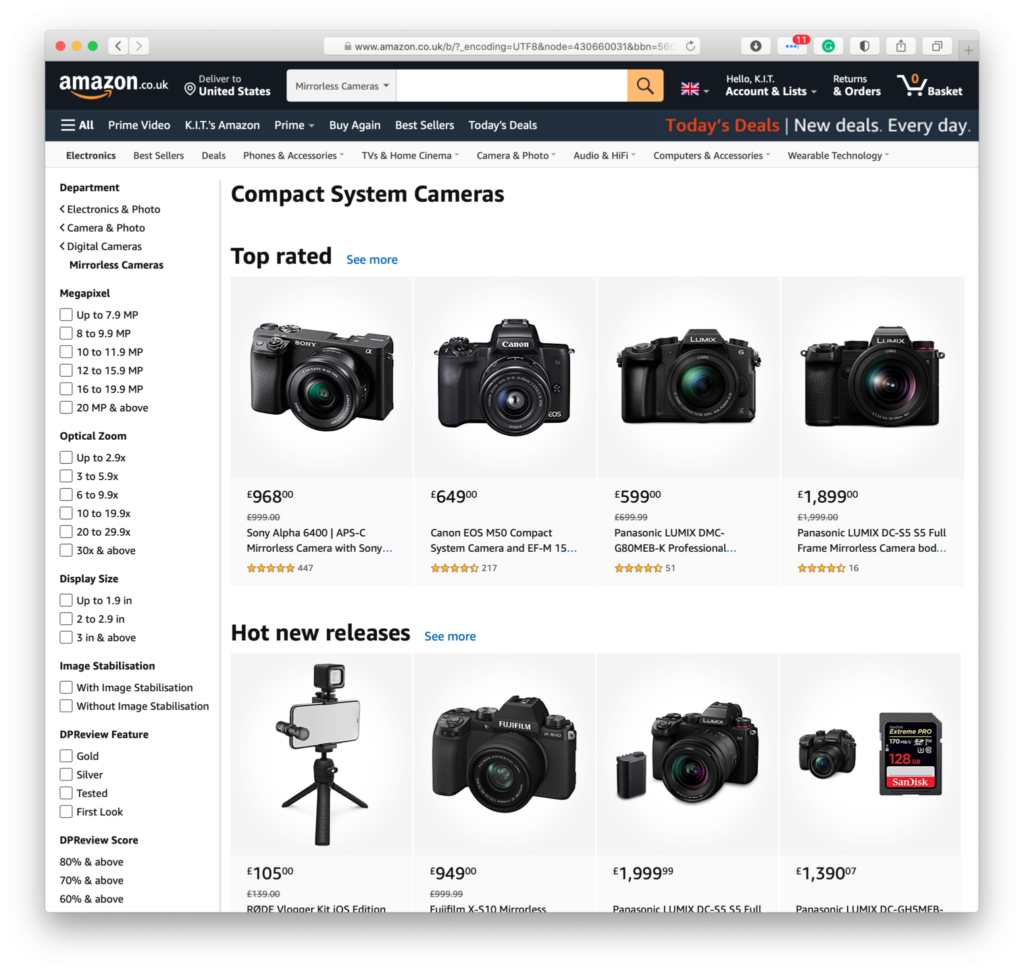
Simple enough?
Let’s move on.
Indirect Qualifying Purchase
An “Indirect Qualifying Purchase” means a Qualifying Purchase of a Product in a different Product Category than the Product detail page linked to from the Special Link that resulted in that Qualifying Purchase. If a Special Link does not link to a Product detail page, then any resulting Qualifying Purchase will be an Indirect Qualifying Purchase.
The first part of defining an Indirect Qualifying Purchase is with what is actually bought. With Amazon’s definition, I interpret this as any sales that are not in the same category as the product you linked to.
Reading that last sentence might strike a chord deep down with you. Amazon is famous for being the “Everything Store” and one of the draws to their affiliate program is that you can still earn commissions when you are recommending TVs but getting sales from toasters and toilet paper. We call this the “Halo Effect” and for many Creators and Publishers using Amazon’s affiliate program, these “Halo sales” from someone clicking your link then doing their weekly shopping within 24 hours can result in adding a sizable amount of commissions to your bottom line. With this Direct/Indirect Qualifying Purchases model, Amazon is significantly reducing the upside from those unrelated (dare I say “Indirect”) purchases.
The second part of defining an “Indirect Qualifying Purchase” is squarely along the lines of the type of link used in the final redirect into the Amazon store. Amazon states that any link, except for one that lands on a product detail page, will automatically qualify as an Indirect Qualifying Purchase for any subsequent sales that are made.
Again, links that go to a search results page, a category, a brand store, or any of the other various types of landing pages that Amazon has in their massive store will be automatically classified as an “Indirect Qualifying Purchase” and thus result in a smaller commission rate and therefore lower Amazon Affiliate earnings.
The last part of their description of how commissions are calculated, copied below, just means that Amazon gets to decide what category a product fits in. Nothing you can do about that!
“Product Category” means the product category of the Product described in the tables below, as determined by us. We will determine the classification of Products in each category described in the Agreement. “Direct Qualifying Revenue” means Qualifying Revenue from Direct Qualifying Purchases.
How to get more Direct Qualifying Purchases and less Indirect Qualifying Purchases
So how do you maximize your affiliate commissions with this format? That’s always a question we love to get into!
First, it’s important to note that there are two factors at play here: 1/ what the shopper buys and 2/ how you get them into the Amazon store.
0/ Create Great Content
You can’t control what the shopper ultimately buys. But you can do your best to create compelling and informative content that helps motivate your audience to make a purchase. If you don’t create great content, then, most other strategy won’t matter all that much in your quest to maximize your Amazon Affiliate earnings.
1/ Use Product Links
You can also control how the shopper gets sent into the store. With this in mind, it’s important that you avoid linking to anything but a product’s detail page. Remember that links to search results, category pages, brand store pages, etc. are all automatically classified as an Indirect Qualifying Purchase so even if you send shoppers to a search results page for a “Blue Yeti Microphone” and they buy a Blue Yeti Microphone you are still only going to earn the Indirect Qualifying Purchase rate.
2/ Use the most Intelligent Tools
If you are using an affiliate link localization tool, like Geniuslink or Amazon’s OneLink, you have some important decisions to make. Due to how this methodology works for calculating commissions, the accuracy of your geo-redirection solution becomes incredibly important.
Accuracy in product matching has always mattered for the user experience of your foreign shoppers but now it’s being rewarded with significantly higher commissions.
As a result, less sophisticated tools, like EasyAzon 4, (that handle your international clicks by always sending to a search results page using the title of the product) are going to lead to a significantly lower total commission rate than what is possible otherwise.
Further, from our extensive testing, OneLink’s subpar matching technology goes to a search results page when localizing for international clicks significantly more often than Geniuslink.
| Genius Link | OneLink | |
Product Match: | 446 | 396 |
Product in Search: | 71 | 129 |
Return to Amazon.com: | 183 | 103 |
No product in search: | 135 | 156 |
Wrong Product: | 5 | 56 |
Total: | 840 | 840 |
Link localization technology may never be perfect and links to search results pages still happen, but that doesn’t mean you can’t still take action here!
3/ Optimize Your Links
Additionally, with a premium link management tool like Geniuslink, you can override the default link localization and add in your own rules about how your affiliate link should behave for your shoppers. We’ve written extensively about this easy optimization that can be done with Geniuslink (and not OneLink) in our knowledgebase (How do I fix an Amazon link that sends clicks to the wrong country or product?) and as #3 in our 6 Things To Do Today To Maximize Your Affiliate Commissions blog.
4/ Make-Up for Amazon Affiliate Earnings
While you may do everything in your power to earn Direct Qualify Purchases (see items 1-3 above), you may still see some reduction in your total commission due to a percentage of sales falling under the category of an Indirect Qualifying Purchase (see the first part of point 0, specifically — you can’t control what the shopper ultimately buys).
As a result, we encourage you to include more than just affiliate links to Amazon when you are recommending a product. We’ve heard and seen great success in moving from direct-to-Amazon affiliate links to our optimized, muli-retailer landing pages, called Choice Pages. This, alone, can be a game-changing strategy to help you increase your Amazon Affiliate Earnings.
Granger McCollough, a website owner who was devastated with last Spring’s intense Amazon.com commission cuts, experimented with moving away from Amazon’s affiliate program, then to using Choice Pages and found an overall 40% increase in his affiliate revenue.
Granger isn’t alone! We did an extensive test with 10 YouTubers and found their conversion rate and earnings per click more than doubled when comparing the performance of a Choice Page to just Amazon affiliate links (blog: How to Earn More Affiliate Revenue on YouTube with Choice Pages).
Fraser Explains
Background & details about Direct / Indirect Qualifying Purchases
The Direct / Indirect Qualifying Purchases model is the fourth major iteration from Amazon on how to reward its affiliates (1/ Classic Fee Structure, 2/ Volume-Based, 3/ Fixed Fee per Category). This newest model was initially rolled out in early November of 2018 with an update to the European programs Operating Agreement, where seven categories were initially impacted. The model was then significantly increased to include 22 categories in a March 1st, 2019 update to the Operating Agreement.
The February 1st, 2021 update brings the model to nine high-level categories (Amazon Fashion, Handmade, Home, Consumables, Digital and media, Hobbies & Auto, Amazon Devices, Electronics & Computers, and All other Products Categories) along with 46 specific categories. Video Game Consoles are the only category that shows having the same commission for both Direct and Indirect Qualifying Purchases (1%).
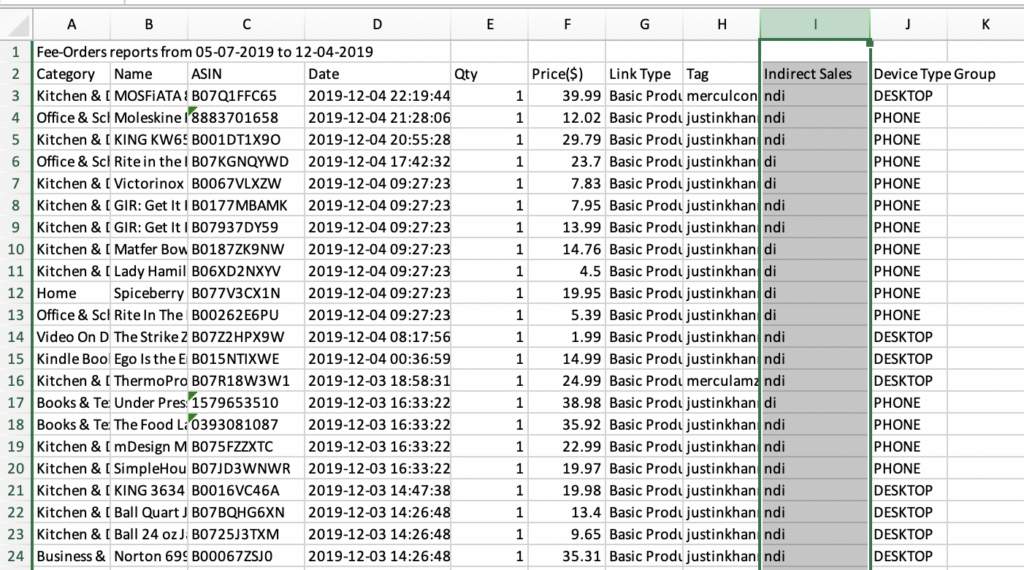
It’s important to note that there are now seven Amazon storefronts and affiliate programs in Europe since the recent rollouts of Amazon Netherlands (Amazon.nl), and Amazon Sweden (Amazon.se). However, it’s only the original five programs that use Direct/indirect Qualifying Purchases (Amazon.co.uk, Amazon.de, Amazon.fr, Amazon.it, and Amazon.es). Amazon Netherlands and Amazon Sweden still use the more common “Fixed fee per category method” (Eg. Amazon NL Site Standard Commission Income and Amazon SE Site Standard Commission Income).
To date the Direct / Indirect Qualifying Purchases model has only been used in the five European affiliate programs mentioned above, however, there is some evidence that it is at least being considered in Amazon’s largest affiliate program – Amazon.com’s Associates Program. This can be found deep in the exported reports from the Amazon.com Associates Central dashboard where you’ll find an additional column of data labeled “Indirect Sales. ”

Conclusion
What do you think about the expansion of the Direct / Indirect Qualifying Purchase model for rewarding commissions? Have you seen an impact from increased volume? Or a decrease because of lazy linking practices and always using search links?
Let us know what you think in the comments below! And if you implement some of these recommendations, we’d love to hear by how much they helped you increase your Amazon Affiliate earnings.
Author
-
Austin Tuwiner is a growth marketer and main contributor to the Geniuslink blog. When he's not nerding about affiliate marketing, you'll find him scuba diving South Floridas reefs.
Author
-
Austin Tuwiner is a growth marketer and main contributor to the Geniuslink blog. When he's not nerding about affiliate marketing, you'll find him scuba diving South Floridas reefs.
Related posts

Can you Include Affiliate Links in Emails?
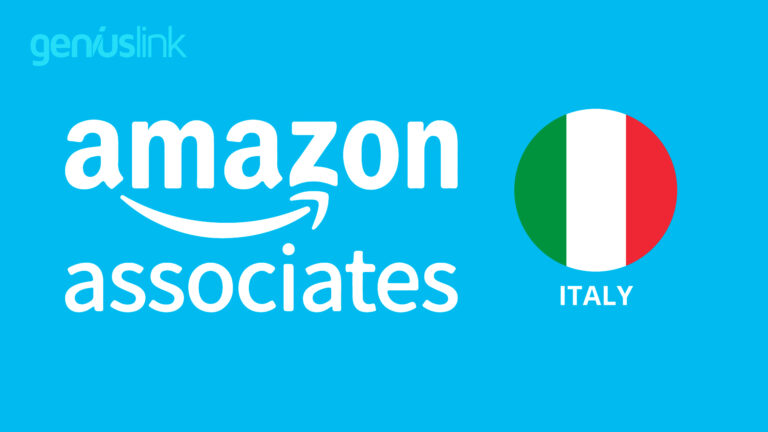
Amazon Associates Italy Guide: Account Setup, Amazon OneLink, Taxes, & More
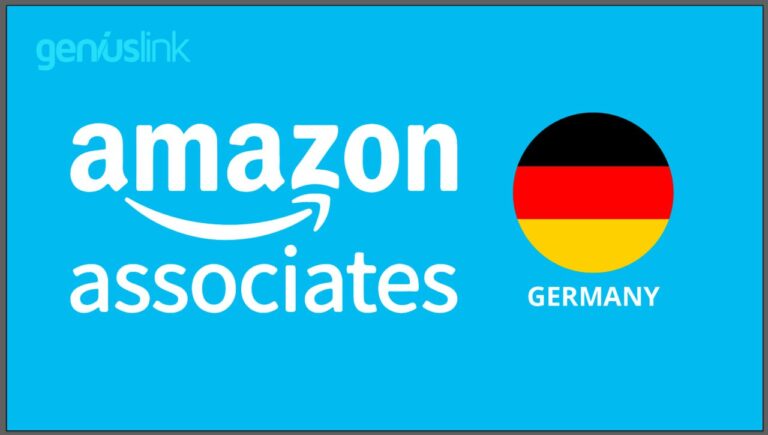
Amazon Associates Germany Guide: Account Setup, Amazon OneLink, Taxes, & More

How to Create Affiliate Product Reviews (With the Help of ChatGPT)
More revenue from every link you share
Geniuslink makes localizing, tracking, and managing smart links dead simple, so you can earn more without added work.

